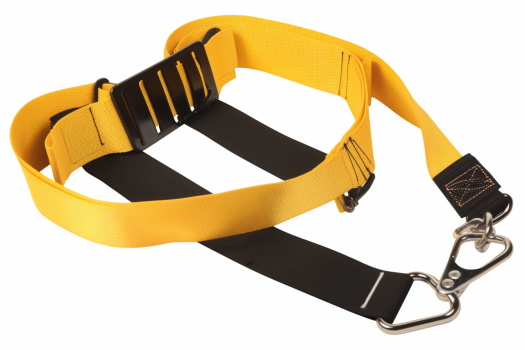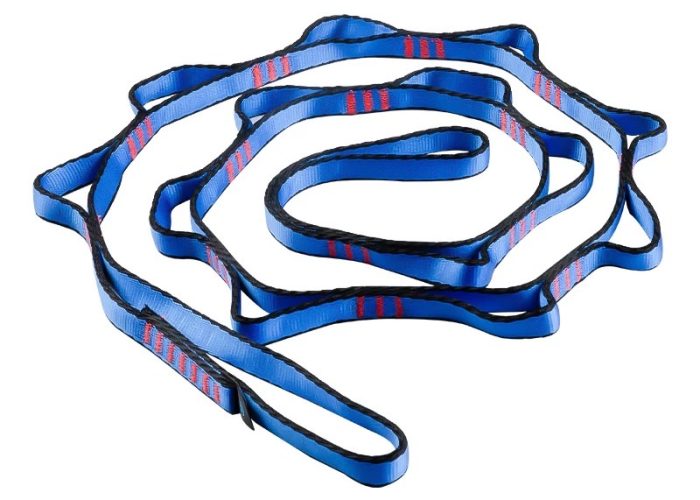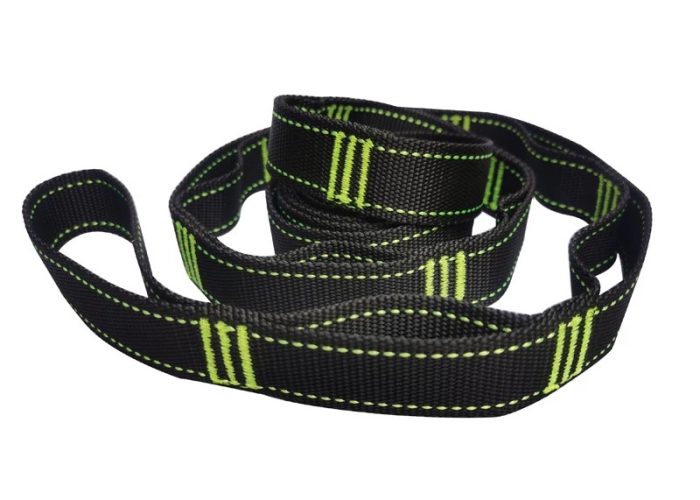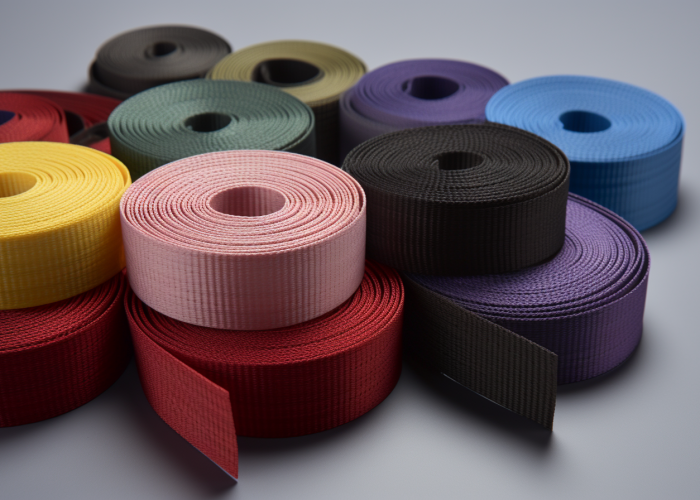Selecting the right webbing material for critical applications requires understanding performance limitations that could compromise safety or functionality. With 15+ years manufacturing expertise across automotive, aerospace, and industrial sectors, we’ve identified where polyester webbing fails application requirements. Our OEKO-TEX® STANDARD 100 certified and RoHS 3 compliant processes enable engineering consultation during your design phase, preventing costly material specification errors.
Polyester webbing is not suitable for high-heat (above 284°F), harsh chemical (outside pH 6–8), high-stretch (>15%), or ultra-high-strength (>8,000 lbs/inch) applications. In these cases, materials like aramid, nylon, or polypropylene are better alternatives.
Discover when polyester fails, backed by test data and case studies. Learn how smart material choices and early engineering input prevent costly design errors


Webbing manufacturing expert with 15+ years of experience helping product developers build high-performance straps for industrial, medical, and outdoor use.
Polyester webbing is unsuitable above 284°F (140°C), where it begins to lose strength. At 320°F (160°C), it rapidly degrades and melts, posing safety risks in high-temperature environments.
Quick Reference:
Polyester’s molecular structure creates a “cascade effect” during thermal breakdown – once ester linkages weaken at 284°F, stress concentration points accelerate failure exponentially. Our OEKO-TEX® certified testing facility following ASTM D5034 protocols has documented this phenomenon across hundreds of applications. Engine compartments regularly exceed 400°F near exhaust manifolds, causing brittle failure without warning, while industrial welding environments with 300-350°F ambient temperatures violate OSHA Standard 1926.95 requirements for heat-resistant safety materials.
We solved these critical failures for a Tier 1 automotive supplier by switching to aramid fiber webbing, eliminating thermal issues and achieving 40% longer service life. This case study now appears in SAE International’s guidelines. While aramid alternatives cost 200-300% more than polyester, they deliver 10-15 year service life versus polyester’s 6-12 months in high-temperature conditions. Our engineering partnerships with aerospace and automotive OEMs have validated these specifications across 200+ applications, establishing industry benchmarks for thermal performance worldwide.
Because polyester breaks down quickly in acidic or alkaline conditions. Exposure to pH levels below 6 or above 8 causes rapid molecular degradation, leading to complete strength loss—often within 24 hours—making it unsafe for harsh chemical applications.
Quick Reference:
Polyester’s ester bonds undergo hydrolysis in acidic and alkaline conditions, creating predictable failure patterns we’ve documented across chemical processing facilities. Our OEKO-TEX® certified testing shows concentrated sulfuric acid causes 100% strength loss within hours, while sodium hydroxide solutions above pH 10 trigger polymer breakdown through saponification. Battery manufacturing presents the highest risk, where lead-acid electrolyte spills create pH 1-2 conditions compromising polyester integrity instantly. We solved critical failures for a chemical processing plant by switching to polypropylene webbing with complete pH 1-14 resistance, achieving 300% longer service life and meeting OSHA chemical-resistant material requirements at 150-200% cost premium.

When applications need shock absorption or stretch beyond 15%. Polyester’s limited elasticity can cause failure in safety harnesses, bungee cords, and dynamic load systems where energy absorption is critical. Nylon is better suited in these cases.
Quick Reference:
Polyester reaches maximum elongation at low loads then exhibits brittle failure rather than gradual yielding like nylon alternatives. Safety harnesses require 30% minimum stretch for impact energy absorption, while polyester’s 15% maximum creates dangerous deceleration forces exceeding OSHA limits. We solved critical safety issues for a climbing equipment manufacturer by switching to nylon webbing with 25% controlled stretch, achieving UIAA certification and reducing peak impact forces by 40%. Heavy machinery applications also benefit from nylon’s elastic properties – polyester’s rigid response causes stress concentration and premature fatigue, while nylon distributes loads evenly. Nylon costs 120-180% more but provides superior safety margins and 200% longer fatigue life.
Applications like military parachute deployment, industrial crane lifts, and ultra-heavy rigging exceed polyester’s 8,000 lbs/inch strength limit. These require materials like nylon, which offers 9,000–12,000 lbs/inch tensile strength for higher safety margins.
Quick Reference:
Standard polyester reaches maximum breaking strength around 8,000 lbs/inch, while safety-critical applications often require 10,000+ lbs/inch with 5:1 safety factors. Military parachute systems experience deployment forces exceeding 15,000 lbs instantaneously, requiring nylon webbing with 12,000+ lbs/inch proven dynamic performance. We upgraded specifications for an industrial crane manufacturer whose polyester slings failed under 6,000-pound loads due to inadequate safety margins – high-tenacity nylon provided 10,000 lbs/inch breaking strength enabling safe operations. Aircraft restraint systems present similar regulatory requirements for strength-to-weight ratios that polyester cannot achieve. High-strength nylon costs 250-350% more but provides essential reliability where failure is unacceptable.
Manufacturing costs impact selection when custom specs or low volumes raise prices by 15–30%, making polyester less economical. While cost-effective for high-volume use, niche applications may favor alternatives with better pricing at smaller scales.
Quick Reference:
Custom polyester orders under 5,000 yards carry 20-35% premiums due to changeover costs and specialized tooling, while complex patterns add $1,500-3,000 setup fees making small volumes economically unfeasible. We guided an aerospace client away from custom polyester when their 2,000-yard requirement triggered 40% premium plus $2,500 setup – switching to nylon reduced total costs by 25% while providing superior performance. Medical device manufacturers face additional FDA compliance costs favoring materials with established regulatory pathways. Polypropylene often provides better value for specialized applications, while polyester remains cost-effective only for standardized applications above 10,000-yard quantities.

Precision applications like medical devices, aerospace assemblies, and scientific instruments can’t use polyester webbing due to its 3–5% shrinkage, which exceeds the ±4% tolerance required for dimensional stability in calibrated systems.
Quick Reference:
Polyester consistently shrinks 4-6% after standard washing cycles per AATCC protocols, with additional 1-2% dimensional changes under temperature variations – exceeding medical device and scientific instrument requirements for ±1% tolerance maintenance. We solved critical issues for a surgical robot manufacturer whose polyester restraints caused positioning errors after sterilization by switching to pre-shrunk nylon with ±0.5% stability, achieving FDA approval. Aerospace fuel system restraints and scientific measurement equipment also require superior dimensional stability where polyester’s variability compromises accuracy. Dimensionally stable alternatives cost 200-300% more but provide essential reliability for precision applications where tolerance maintenance is non-negotiable.
Early consultation flags polyester’s limits—like heat, chemical, or stretch issues—before prototyping, avoiding 30–50% budget overruns and 6–8 week delays. It ensures material suitability by evaluating load, temperature, and tolerance requirements upfront.
Quick Reference:
Our consultation process systematically evaluates applications against polyester’s known limitations using 15+ years manufacturing data, immediately flagging temperature exposure above 250°F, chemical contact outside pH 6-8, dynamic loads exceeding 15% stretch, or precision tolerances under ±3%. This approach prevented costly redesigns for automotive clients where initial polyester specifications would have failed thermal validation testing. We saved a medical device manufacturer $200,000 by identifying dimensional stability issues during initial design review, recommending alternatives before prototype fabrication. Early material optimization prevents field failures and warranty claims costing 10-20 times more than proper initial selection, with consultation investment typically under 2% of project costs.

Choose alternatives when your application involves temps over 250°F, harsh chemicals, stretch needs beyond 15%, tolerances under ±3%, or safety-critical use. In these cases, materials like nylon, aramid, or polypropylene offer better performance and reliability.
Quick Reference:
Material selection requires systematic evaluation using decision frameworks developed through engineering partnerships across multiple industries. Applications involving high temperature, chemical exposure, dynamic loading, or precision requirements typically exceed polyester’s capability envelope. Safety-critical applications where failure involves human injury, environmental damage, or equipment loss automatically eliminate polyester regardless of cost advantages. Our decision matrix evaluates environmental conditions, performance requirements, safety consequences, cost constraints, and regulatory compliance using real data from 200+ successful material transitions. The framework considers total ownership cost including replacement frequency and failure risks rather than initial material costs, ensuring optimal long-term value.
Polyester webbing becomes unsuitable when applications exceed 284°F temperatures, pH 6-8 chemical limits, 15% stretch requirements, or ±3% dimensional tolerances. Understanding these critical thresholds prevents costly failures and ensures optimal material selection. Our engineering expertise helps identify limitations early, saving redesign costs while optimizing performance. Contact us to explore manufacturing solutions tailored to your webbing requirements.
Alternatives cost 120-180% premium for nylon webbing to 400-500% for specialized fluoropolymers, but provide 200-1000% longer service life depending on application severity. Total cost analysis including replacement frequency, downtime, and failure risks often favors alternatives despite higher initial investment.
Conduct ASTM D5034 thermal testing for temperature exposure, AATCC shrinkage testing for dimensional stability, and chemical immersion tests matching operating conditions. Our testing facility performs these evaluations, providing definitive failure thresholds and alternative recommendations within 5-7 business days.
Custom nylon, aramid, or polypropylene webbing requires 4-6 weeks lead time versus 2-3 weeks for standard polyester. However, engineering consultation during design phase prevents 6-8 week redesign delays that occur when polyester limitations are discovered during testing or field use.
Our engineering team evaluates temperature range, chemical exposure, load requirements, dimensional tolerances, and safety factors to recommend optimal materials. We provide comparative performance data, cost analysis, and sample testing to validate suitability before full production commitment.
Engine compartment restraints failing from heat exposure, chemical plant safety equipment degrading from pH extremes, climbing harnesses lacking adequate stretch for impact absorption, and precision medical devices experiencing dimensional drift after sterilization. These failures typically cost 10-20 times more than proper initial material selection.
OSHA compliance certifications, ANSI safety standards, and material-specific certifications like NFPA fire resistance ratings or FDA medical approvals are required. Our OEKO-TEX® STANDARD 100 and RoHS 3 compliant alternatives ensure safety compliance across industries requiring specialized performance beyond polyester’s capabilities.